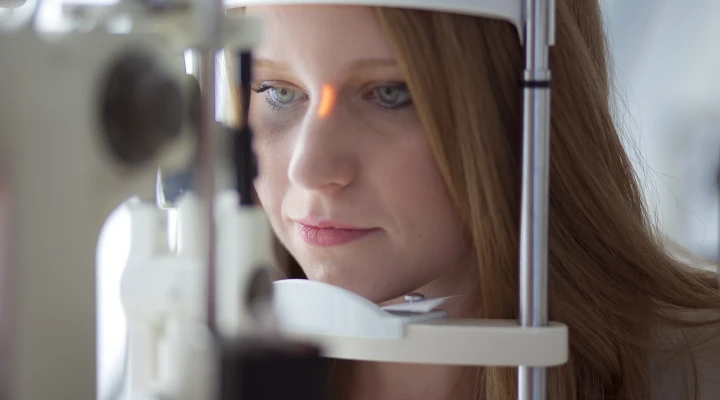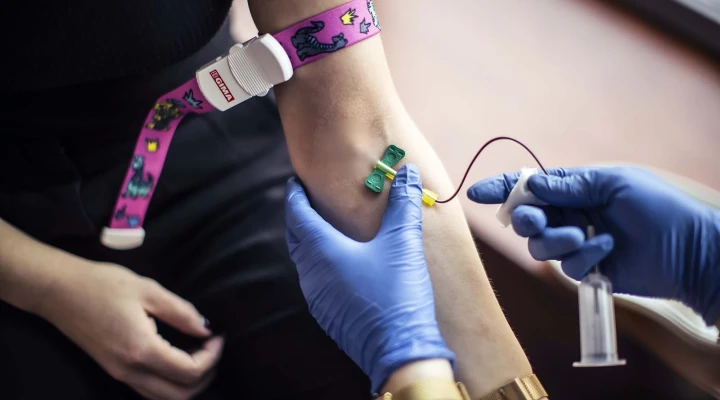I'm sure I'm not the only one who, as the mother of a teenager, watches in alarm as the lanky, pimple-covered apple of my eye sits with his eyes constantly fixated on a laptop or a cell phone as he becomes one with this flickering new reality. There are many reasons why this may cause concern. One thing that bothers is me is how damaging it can be for our eyes.
I discussed the topic with Doctor Regina Lukács, who has been with us since the summer of 2020 and has a growing number of patients at RMC Clinics.
EK: Is all the time our children spend in front of smartphone or computer bad for their eyes?
RL: Yes, just like any activity you do close up, using these devices increases the risk of becoming nearsighted and also of becoming eyesight becoming progressively worse. I should add that spending lots of time indoors and not much time outdoors in itself increases the risk, and of course children tend to do more of the activities mentioned above when they're inside. Nearsightedness (myopia) is more common from the age of six, and usually emerges between the ages of seven and ten. By 15, the vision of half of nearsighted children will have stabilized, 77% by 18 years of age, 90% by 21, and the rest by 24 (except for those with a high degree of myopia).
EK: Why are these devices bad for your eyes? What can they trigger?
RL: In addition to increasing the risk of developing nearsightedness and progressive worsening of existing myopia, they can also cause problems with dry eyes (this is true for adults as well), though these issues can be alleviated with eye drops. Many people also claim that blue light from digital devices (such as a monitor, TV screen, cell phone) damages the eyes. There is currently no conclusive scientific evidence for this, however.
EK: How can we prevent this issue? And if we have been unable to prevent an issue developing and some kind of eye-related issue emerges, what can we do?
RL: For any activity where you are looking at something close up, regular breaks and an adequate reading distance (20-25 cm is not enough, you need more!), without tilting your head, can help. You need to switch between looking up close and far away while reading, but increasing the quantity of outdoor activity is definitely the most important thing. One study found the maximum time you should spend in front of a screen: below the age of two, none; until the age of five, a maximum of one hour a day; from 5-12 a maximum of two hours a day.
EK: How much time a day should you spend outside?
RL: School-aged children should spend 8-15 hours outside. If you can increase the amount of time spent outside from 0-5 hours to at least 14 hours, this will reduce the risk of developing myopia by approximately a third.
EK: And if you have been unable to prevent an issue developing and some kind of eye-related issue emerges, what can you do?
RL: In the case of nearsightedness, appropriate correction is recommended, i.e. buying a suitable pair of glasses (both under and over correction are bad) that should be worn according to medical guidelines.
EK: So we should avoid the glasses you can get in drugstores?
RL: Yes, you definitely need a professional to establish what prescription your child needs. Wearing glasses of the wrong strength is in itself a potential risk factor for worsening nearsightedness.
EK: How can you tell if your child has an issue with their sight?
RL: If they can't see things that are far away very well, the main symptom is squinting.
EK: What happens if you don't notice it and your child doesn't get glasses when they should?
RL: Their myopia can worsen. In the long run, in the case of high myopia (a refractive error of more than -6.0 D sph), so-called pathological myopia can develop, which is when structural changes in the eye have already developed (such as damage to the site of acute vision or the optic nerve). This can cause irreversible vision loss and even blindness. In addition, myopia increases the risk of developing several eye diseases, including glaucoma, cataracts, and retinal detachment.
Nearsightedness is becoming increasingly common across the world. While in 2020 this number will affect 2.6 billion people, by 2030 it is expected to rise to 3.4 billion, along with an increase in the proportion of high myopia and pathological myopia, as detailed above.
By 2050, the proportion of short-sighted people is projected to be 56% in Western Europe, 54% in Central Europe and 50% in Eastern Europe. In Europe, 45-50% of young people aged 25-29 are already nearsighted, although the number with high myopia is relatively small (2.7%).
Eszter Kallós




